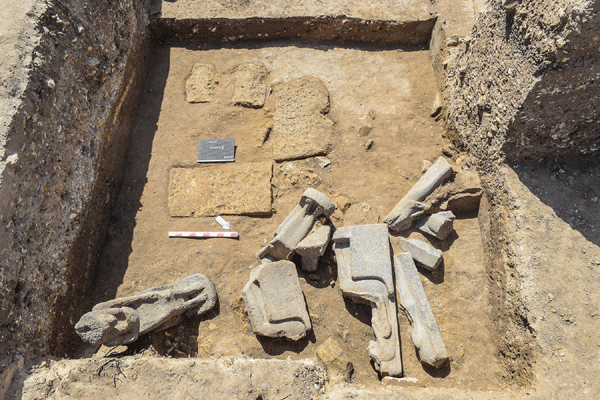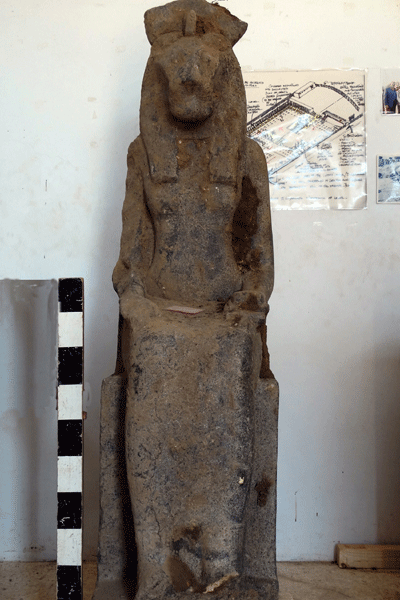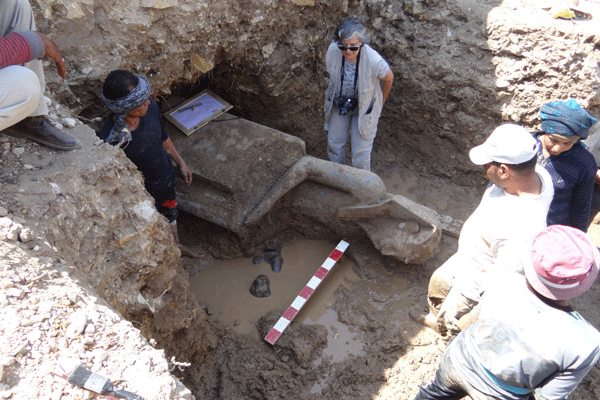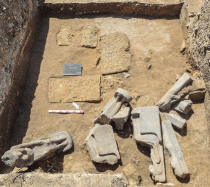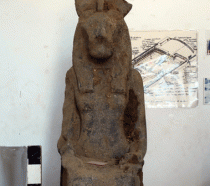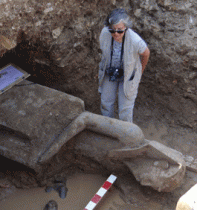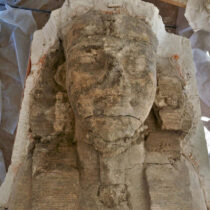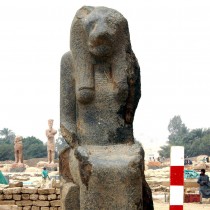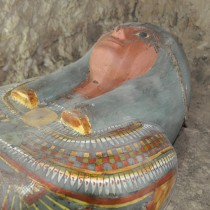Archaeologists in Egypt have discovered a magnificent statue of pharaoh Amenhotep III and 66 parts of statues of goddess Sekhmet in Luxor.
The Amenhotep statue was found by archaeologists with The Colossi of Memnon and Amenhotep III Temple Conservation Project digging in the great court of the temple of Amenhotep III on Luxor’s West Bank. It is made of black granite, and it represents the king seated on the throne. It is 248cm high, 61cm wide and 110cm deep.
Project director Hourig Sourouzian said that the statue was probably made early in the king’s reign, as it depicts him at a rather young age. She also said that it is extremely well carved and perfectly polished.
Once the statue and site are restored it will be on display, along with a similar statue found in 2009 by the same team, inside the temple in their original positions.
The team also discovered 66 parts of statues of the goddess Sekhmet. The lion-headed goddess is represented holding a papyrus sceptre and an ankh, a symbol of life. Many of the parts found include the goddess’s lion head, busts and other parts. The fragments of the series of statues were found while the team was excavating in the area which would have been between the temple’s Peristyle Court and Hypostyle Hall.
The statues of the goddess were probably commissioned in hundreds by Amenhotep III, since she was a warrior goddess and a goddess of healing and she was believed to protect the sun god from his enemies. He probably wanted the goddess to protect the temple from dangers and the king from diseases. The Sekhmet statues will also be displayed in their original setting once the site is restored, according to Sourouzian.
Researchers hope that the discoveries will provide valuable information as to what the Amenhotep III temple looked like.
